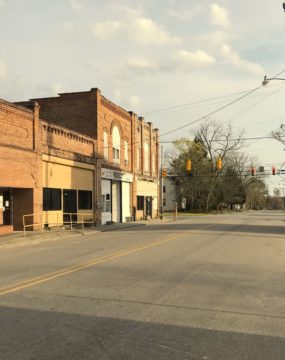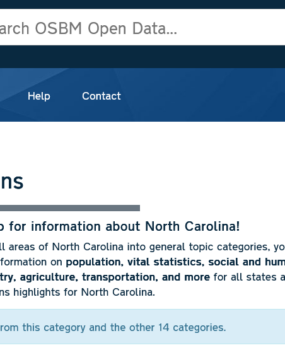Carolina Demographics
Keep up with our latest demographic insights

There are many reasons for choosing to live with a partner without marrying or prior to getting married, including financial reasons or to test the relationship prior to marriage. In demography, we refer to unmarried romantic partners living together using the term cohabitation. Fifty years ago, it was very rare to live with an unmarried partner. Only 0.1 percent of 18-24-year-olds and 0.2 percent of 25- to 34-year-olds lived with an unmarried partner in…

Are you curious how North Carolina ranks among the states for statistical categories like population, education, government, employment, agriculture, transportation, and more? The newly-updated 2023 How NC Ranks data tool from the NC State Data Center (NC SDC) and NC Office of State Budget and Management (NC OSBM) provides data visualizations highlighting selected data points for the US and North Carolina Notably, the tool also provides historical data, which allows analysis and comparisons over time.…

The number of babies born each year in North Carolina, as well as the United States, has been dropping. We published a piece on the topic two years ago when provisional numbers were first released about birthrates during the 2020 pandemic. Since then, the final data has been released. (If you read both this piece and the piece we wrote earlier, you’ll notice that percentages are slightly different – that piece was based on…

Achieving a complete and accurate count in the U.S. Census is not simple. The biggest challenge in conducting the census is getting households to mail back or complete their forms online or by phone, a process known as self-response. Higher self-response rates reduce the overall costs of conducting the census. And, when individuals self-respond, the data is more accurate. Before the 2020 Census, Carolina Demography partnered with the NC Counts Coalition to create a map…

Dr. Michael Cline is the state demographer for North Carolina at the Office of State Budget and Management and has given us permission to re-post his content here. On May 25, 2023, the US Census Bureau published the Demographic Profile and Demographic and Housing Characteristic (DHC) datasets for the 2020 Census. These datasets provide a more expansive picture of the population counted in the 2020 Census than the 2020 Census data published to date. From…

Today the US Census Bureau released 2022 population estimates for Metropolitan/Micropolitan Statistical Areas, incorporated cities and towns, and subcounty areas. These are annual population estimates based on the last decennial census and not actual 2020 Census counts. The annual Census estimates should not be confused with certified annual population estimates produced by the State Demographer of North Carolina which will be released later this year The press kit and data from today's release are available…

Dr. Michael Cline is the state demographer for North Carolina at the Office of State Budget and Management and has given us permission to re-post his content here. “We are a safe space where young people and families can be accepted and celebrated for who they are. It’s a safe space to be bilingual, bicultural, and to be yourself.” That is ISLA Executive Director Lwiza Escobar Garcia describing the role her organization plays in the…

From WoW Supermarket in Monroe, to Tienda Mi Pueblo in Durham; from Dirtbag Ales in Hope Mills to Tienda Los Nenes in Asheville; from Pura Vida Worldy Art in Charlotte to Diamante Arts & Cultural Center in Cary. The evidence of Hispanic population’s growth and cultural influence can be found across North Carolina. The Hispanic population in the state hasn’t just grown in the last three decades. Where the Hispanic population lives in North Carolina…

Dr. Michael Cline is the state demographer for North Carolina at the Office of State Budget and Management and has given us permission to re-post his content here. In 1989 a young couple moved to Greenville from Puerto Rico. Like many other young families who relocated to North Carolina, they were pursuing opportunity. The husband was embarking on his career (engineering), as his wife stayed home with their young daughter. Their daughter was soon joined…

Dr. Michael Cline is the state demographer for North Carolina at the Office of State Budget and Management and has given us permission to re-post his content here. In 2012 our office began preparing population estimates and projections of North Carolina’s Hispanic population because the demographic had grown exponentially since 1990 to become a significant part of the overall North Carolina population. These data included annual estimates and projections for Hispanic and Non-Hispanic population groups…
Your support is critical to our mission of measuring, understanding, and predicting population change and its impact. Donate to Carolina Demography today.